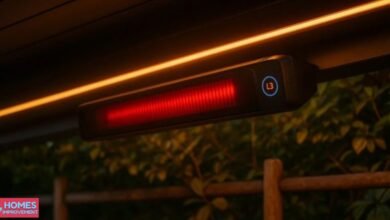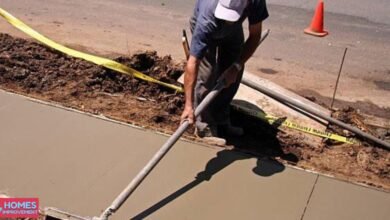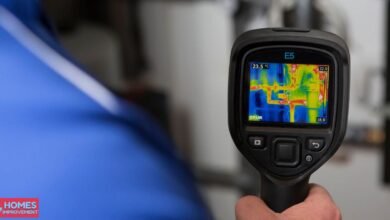Roof Decking: Ultimate Guide to Materials, Installation, and Maintenance

Roof decking forms the essential foundation of any roofing system, providing structural support and stability for the roof covering. It plays a crucial role in protecting your home from weather, enhancing insulation, and ensuring long-term durability. Choosing the right roof decking material can significantly impact your home’s safety, energy efficiency, and overall appearance. From traditional wood to modern composite and metal panels, there are options to suit every design preference and budget.
Proper installation and regular maintenance are equally important to maximize the lifespan of roof decking. Understanding the materials, installation techniques, and upkeep strategies helps homeowners avoid common problems such as leaks, sagging, or water damage. This guide covers everything you need to know about roof decking, from selecting the best materials to step-by-step installation tips and practical maintenance advice.
Understanding Roof Decking and Its Importance
Roof decking is the foundation layer that supports your roof covering and ensures structural stability. Often made from wood, metal, or engineered panels, roof decking provides durability and safety to your home. Choosing the right decking material can significantly impact insulation, weather resistance, and long-term performance. Modern roof decking options also improve aesthetic appeal while preventing leaks and water damage. Homeowners increasingly focus on sustainable and fire-resistant materials for roof decking. Proper roof decking installation ensures that your roofing system can handle extreme weather, reduce energy costs, and protect the structure below. Understanding the types of materials, their advantages, and installation techniques is crucial. From traditional plywood to advanced composite panels, roof decking serves both functional and aesthetic purposes. Knowing the right approach will help you make informed decisions for your home improvement projects. For more material options and reviews, check out this roof decking guide.
Popular Materials Used in Roof Decking
Roof decking can be constructed using a variety of materials, each offering unique benefits in terms of durability, aesthetics, and cost. Selecting the right material depends on your climate, budget, and design preferences. Commonly used roof decking materials include:
- Wood Plywood: Affordable, easy to install, and widely available; requires treatment to prevent rot and moisture damage.
- Engineered Wood Panels: Stronger and more resistant to warping than traditional plywood.
- Metal Decking: Typically steel or aluminum; offers excellent durability, fire resistance, and low maintenance.
- Concrete Panels: Ideal for flat or low-slope roofs; provides high load-bearing capacity and thermal insulation.
- Composite Materials: Lightweight, eco-friendly, and increasingly popular for modern homes.
Each material has its advantages and limitations, so understanding their characteristics ensures your roof decking is both functional and long-lasting.
Step-by-Step Roof Decking Installation Guide
Installing roof decking requires careful planning and precise execution to ensure durability and safety. Following a systematic approach helps prevent common issues like misalignment or water leaks. Here’s a step-by-step guide for proper roof decking installation:
- Prepare the Roof Structure: Remove old roofing material and inspect the underlying framework for damage.
- Install Moisture Barrier: Lay down underlayment or vapor barrier to protect against water infiltration.
- Cut Decking Panels: Measure and cut panels to fit the roof dimensions, leaving slight gaps for expansion.
- Position Panels: Place the panels evenly, ensuring seams are staggered for added strength.
- Secure Panels: Use nails or screws suitable for your chosen material, making sure panels are flush and stable.
- Inspect Alignment: Check for level surfaces and proper alignment to avoid pooling or uneven weight distribution.
- Final Adjustments: Make minor adjustments and ensure all fasteners are secure before adding roofing material.
This method ensures a strong, durable, and long-lasting roof decking layer that protects your home effectively.
Essential Tools and Safety Measures
Roof decking installation requires specific tools to maintain accuracy and safety. Common tools include saws, drills, hammers, tape measures, and safety harnesses. Working at heights demands protective gear such as gloves, helmets, and slip-resistant shoes. Ladder stability and fall protection systems are critical during installation. Measuring and cutting must be precise to prevent uneven surfaces. Using appropriate fasteners for the chosen material ensures long-term durability. Inspect tools before use to avoid accidents. It’s also recommended to have a helper for panel alignment and lifting heavy materials. Following safety protocols not only prevents injuries but also guarantees a professional-quality finish. For additional tips, explore this roof decking safety guide.
Common Roof Decking Problems and Solutions
Roof decking can face several common problems over time, including warping, rotting, sagging, and water damage. Wooden decks are particularly prone to moisture-related issues, which can weaken the structure and reduce the lifespan of your roof. Metal panels may experience corrosion, while flat decks can sag due to uneven weight distribution. Many of these problems arise from improper installation, poor ventilation, or lack of regular maintenance.
Addressing roof decking issues early can prevent costly repairs and ensure long-term durability. Solutions include sealing and treating wooden panels, reinforcing sagging areas, and applying protective coatings on metal surfaces. Regular inspections and timely maintenance, such as clearing debris and checking fasteners, can keep roof decking strong and functional. For detailed guidance on roof repairs, homeowners can refer to our Repair Roof by Using in 5 Stages guide. By proactively managing these issues, homeowners can extend the life of their roof decking and maintain the safety and stability of their homes.
Roof Decking Maintenance Tips
Proper maintenance is essential to extend the lifespan of roof decking and ensure the overall durability of your roofing system. Regular inspections allow homeowners to identify damage early, preventing small issues from becoming major problems. Cleaning debris from the roof surface and gutters helps avoid water accumulation, which can lead to rot, corrosion, or structural weakening. Applying protective coatings or sealants adds an extra layer of defense against weathering and moisture. Additionally, ensuring proper ventilation reduces heat and humidity buildup, which protects the decking material and improves energy efficiency. Consistent upkeep not only prolongs the life of roof decking but also maintains the safety and stability of your home.
Key Roof Decking Maintenance Tips
- Inspect roof decking at least twice a year for signs of damage or wear.
- Clean gutters and remove debris to prevent water buildup and moss growth.
- Reapply sealants or protective coatings as recommended by manufacturers.
- Repair minor cracks, loose panels, or fasteners promptly.
- Ensure proper ventilation to reduce moisture and heat-related damage.
- Schedule professional inspections periodically for hidden or hard-to-reach areas.
Eco-Friendly and Modern Roof Decking Trends
Sustainable materials are trending in roof decking. Recycled composites and FSC-certified wood reduce environmental impact while maintaining durability. Green roof decking, with vegetation layers, enhances insulation and reduces stormwater runoff. Solar panel-ready decking integrates renewable energy seamlessly. Lightweight and modular decking options simplify installation and repairs. Homeowners increasingly combine aesthetics with sustainability, selecting materials that offer energy efficiency and long-term savings. These modern innovations ensure roof decking not only protects your home but also contributes to environmental responsibility. Explore more eco-friendly solutions in this advanced roof decking trends guide.
Cost Considerations for Roof Decking
When planning for roof decking, understanding the cost implications is crucial to make a budget-friendly and long-lasting choice. The total cost depends on the type of material, roof size, labor charges, and any additional features like insulation or underlayment. Wood panels are generally affordable but may require regular maintenance, while metal and composite options have higher upfront costs but offer longer durability and lower maintenance. Complex roof designs or flat layouts can increase installation expenses. Homeowners should also factor in long-term costs such as repairs, coatings, and inspections to ensure their investment in roof decking remains worthwhile. Comparing options and consulting professionals can help achieve the best balance between quality and cost. For a detailed breakdown, check out HomeGuide’s cost breakdown.
| Material Type | Average Cost per Square Foot | Durability | Maintenance Requirement |
| Wood Plywood | $3 – $5 | 15–25 years | Moderate, requires sealing |
| Engineered Wood | $4 – $6 | 20–30 years | Low to moderate |
| Metal Decking | $6 – $10 | 40+ years | Low, occasional coating |
| Concrete Panels | $7 – $12 | 40+ years | Low, periodic inspection |
| Composite Materials | $5 – $9 | 30–40 years | Low, minimal upkeep |
Conclusion
In conclusion, roof decking plays a vital role in the overall strength, durability, and efficiency of any roofing system. Choosing the right materials, following proper installation procedures, and performing regular maintenance ensures long-lasting performance and protects your home from weather damage. Modern trends, including eco-friendly and composite options, offer homeowners both aesthetic appeal and sustainability. By understanding the importance of roof decking and investing in quality materials and upkeep, you can enjoy a secure, functional, and visually appealing roof for many years to come.
FAQs
How long does roof decking last?
Roof decking lifespan depends on material. Wood panels last 15–25 years with maintenance, while metal or composite decks can last 40+ years. Regular inspection, moisture control, and protective coatings extend durability.
Can I install roof decking myself?
Yes, with proper tools, safety gear, and guidance, DIY installation is possible. However, complex designs or large areas are best handled by professionals to avoid structural issues.
What is the best material for roof decking?
The choice depends on climate, budget, and desired lifespan. Wood is cost-effective, metal offers durability, and composites are eco-friendly and lightweight.
How often should I inspect my roof decking?
Inspect your roof decking at least twice a year, ideally in spring and fall. After severe storms, check for damage to prevent leaks or structural issues.
Does roof decking require maintenance?
Yes, routine maintenance like cleaning, sealant application, and repairing minor damage is essential to prolong the decking’s life and maintain roof integrity.





